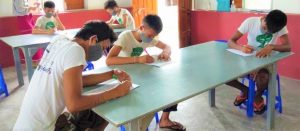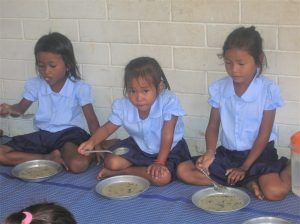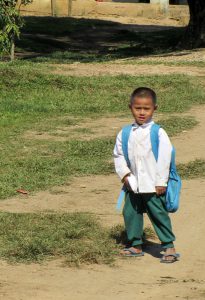For a year now, the covid 19 health crisis has affected each country and we all have felt the consequences on our skin. To the health crisis, however, the educational crisis has been added. What does that mean?
 It means that if we gave the floor to a child, a boy, a girl who was attending school, he would surely tell us that the pandemic had a negative impact on his right to education. In fact, during the peak of the health emergency, more than 1.5 billion students (that is to say more than 90% worldwide) were affected by the school closures[1]: these are expected to exacerbate the learning crisis that existed before the pandemic[2].
It means that if we gave the floor to a child, a boy, a girl who was attending school, he would surely tell us that the pandemic had a negative impact on his right to education. In fact, during the peak of the health emergency, more than 1.5 billion students (that is to say more than 90% worldwide) were affected by the school closures[1]: these are expected to exacerbate the learning crisis that existed before the pandemic[2].
Several studies by the United Nations Agencies over the past year have revealed the most diverse negative repercussions of school closure.
First of all, distance learning is not possible for everyone. 2.2 billion boys, girls and young people under the age of 25 do not have an internet connection at home. In addition, distance learning has contributed to exacerbate social inequality between different social groups.
 In low-income countries only 6% of under-25 have internet access in their household, while for the same group in high-income countries the percentage grows to 87%. Data confirm that internet access is directly related to a country’s GDP per capita: the higher the GDP per capita, the richer the country, the more children will have internet access from home.
In low-income countries only 6% of under-25 have internet access in their household, while for the same group in high-income countries the percentage grows to 87%. Data confirm that internet access is directly related to a country’s GDP per capita: the higher the GDP per capita, the richer the country, the more children will have internet access from home.
A further gap opens up on the internal front of countries and depends on the origin from urban or rural areas. Worldwide, students living in cities have 41% of the chance to have access to the network at home, compared to only 25% of their peers living in villages. [3]
Particular attention is therefore needed in policies for the spreading of the internet in order to shorten the gap that has been created in violation of the right to education and Sustainable Development Goal 4, which states countries should work to “ensure inclusive and equitable quality education and promoting lifelong learning opportunities for all“.[4]
The suspension of courses and lessons often leads to an increase in the drop-out rate, too: the pandemic could therefore lead to an average loss between 0.3 and 0.9 years of school.
In addition to technical obstacles, many children at home do not have the support of their parents, which is necessary for distance learning.
It is estimated that these losses will lead to a reduction in the average income of today’s children during their lives. The estimated loss is around $10 trillion and will have long-term poverty-increasing effects.[5]
 However, the closure of schools has also other side effects. There are not only changes in the way of following the lessons, but for instance an important impact on malnutrition has been highlighted. In low- and middle-income countries, coverage of essential nutrition services has been reduced by 30%. Here in fact, meals provided by schools according to special nutrition programs are for millions of children the most important meal, the essential source of nutrition.[6]
However, the closure of schools has also other side effects. There are not only changes in the way of following the lessons, but for instance an important impact on malnutrition has been highlighted. In low- and middle-income countries, coverage of essential nutrition services has been reduced by 30%. Here in fact, meals provided by schools according to special nutrition programs are for millions of children the most important meal, the essential source of nutrition.[6]
 In conclusion, unlike what was initially said, children will not be the least affected by covid19. They will not be in terms of education, poverty, inequality, but not even in terms of health and well-being: problems of health, nutrition and violence are part of the daily life of many children who cannot access schools.
In conclusion, unlike what was initially said, children will not be the least affected by covid19. They will not be in terms of education, poverty, inequality, but not even in terms of health and well-being: problems of health, nutrition and violence are part of the daily life of many children who cannot access schools.
The long-term repercussions will affect the Sustainable Development Goals concerning poverty reduction, health and well-being, inclusive education and gender equality. It is up to forward-looking policies to be able to fill the gaps created and to continue the path to achieve a fair and inclusive education, which allows every child and adolescent to fully express themselves, and actively contribute with dignity to build a fair and inclusive society in their own country.
[1] Building back equal: Girls back to school guide, Unicef 2020
[2] “Covid-19 and school closures: one year of education disruption”, UNICEF 2021
[3] How many children and young people have internet access at home? Unicef 2020
[4] United Nations, Sustainable, 20 Development Goals
[5] COVID-19: Missing More Than a Classroom. The impact of school closures on children’s nutrition Innocent Working Paper 2021-01; How many children and young people have internet access at home? Unicef 2020
[6] COVID-19: Missing More Than a Classroom. The impact of school closures on children’s nutrition, Innocent Working Paper 2021-01

Recent Comments